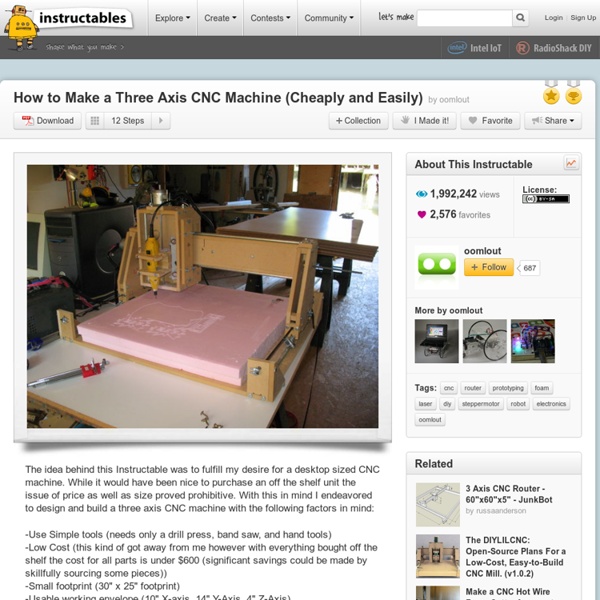How to Make a Three Axis CNC Machine (Cheaply and Easily)

Downloads « DIYLILCNC
Downloads Detailed instruction sets covering every step of our build, from parts lists to assembly and Linux setup; digital source files used for laser-cut/CNC fabrication. Creative Commons License Info The plans and source files for this project are released under a Creative Commons Attribution Share-Alike license. Community Sandbox We’ll be using this section to publish modified files that relate to the DIYLILCNC. These files have not been reviewed in any way. These files have been reviewed visually but not tested. These files have been cut and tested by a forum member. Solidworks 2009 Credit: Jacques Favreau.
DIYLILCNC
Tools / Processing.org
We needyour help! Help us continue with your generosity! Donate The following tools are included with the Processing software. Select the tool you want to use from the Tools menu of the Processing Environment. Archive SketchArchives a copy of the current sketch in .zip format. Contributed tools must be downloaded individually.
Make CNC DIY Projects & Products | MakeCNC.com
Related:
Related:



